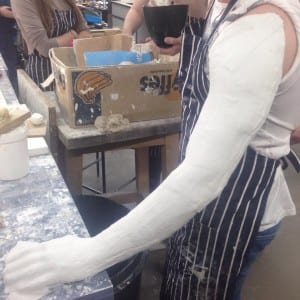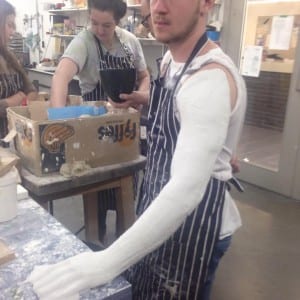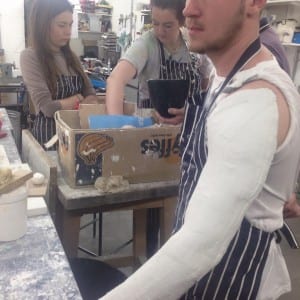As our performance is based on the architexture of the libary and the human body we have chosen to Mod Roc body parts and place them in interested and unusual places on and around the libary stair case. Body parts and the image of body parts have been our groups main focus this week as we have researched the architexture to an extent and now are focusing on creating a decent amound of Mod Rock casts to place all over the libary. These are images showing our group mod rocking an arm using strips of material and water and we are still waiting for the outcome of the cast. The results of our mod rocking in the past have been very good and the casts replicate real imitations of body parts. The casts when finished have alot of detail and are very interesting to look at as well as looking very unusual. We created these mod rock casts in the Art studio on the University Campus and found that we can create alot of material in the space and with the avaliable materials that are on offer. Hopefully when these casts are finished we are hoping to place them all around the stair case of the libary. It will be very interesting to see our audiences reaction when they see the casts. We are continuing creating the casts for the libary this week.
Abigail Earlie


